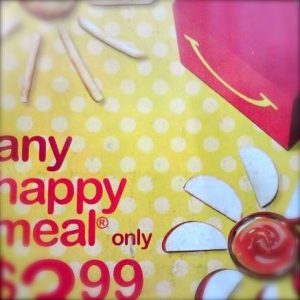 There are a herd of sacred cows about the professional services brand, not the least of which is the unadventurous perception that professional service brand is more successful the more elitist it is, the more luxuriant the experience for the customer, as if the word “services” stipulates such strict superlative. With this comes the idea that the challenge of winning projects falls down to delivering design with enough feel-good extras to make clients loyal. It means addicting clients to your high-brow customer service techniques so that they feel dispossessed when they go elsewhere.
There are a herd of sacred cows about the professional services brand, not the least of which is the unadventurous perception that professional service brand is more successful the more elitist it is, the more luxuriant the experience for the customer, as if the word “services” stipulates such strict superlative. With this comes the idea that the challenge of winning projects falls down to delivering design with enough feel-good extras to make clients loyal. It means addicting clients to your high-brow customer service techniques so that they feel dispossessed when they go elsewhere.
But consider this. If you were to describe the most indulgent dining experience available to a reasonable segment of the population, it would probably look something like this: Escargot, pear salad with pomegranate vinaigrette and Sicilian goat cheese, lobster bisque, duck with thyme and truffle butter, sorbet and wine with each course, live jazz in the background.
Also keep in mind that no one has yet successfully branded this experience on a global scale.
The “Happy Meal”, however, has been branded on a global scale. This is partly due to the wider access created by the price, but also to the speed and convenience – despite the conspicuous lack of service-related features. You see, sometimes a Happy Meal is what people want, even if they’ve had the thyme and truffle duck before, even if they know the duck is a superior experience. Sometimes they want to get what they need quickly and – more importantly –anonymously. Customers tire of building deep, intimate connections with vendors because sometimes it is exhausting. Sometimes they want to buy and use services without allowing the service provider to probe their inner most thoughts and feelings, poke at their buttons to find the hot ones or invade their Friday nights to entertain and curry favor with them.
I recently interviewed two customers on this topic. One was a county engineer, the other a VP of a residential land development company. The county engineer told me that his pet peeve with vendors was how they insisted on asking personal questions. He hated it because he knew they weren’t genuinely interested in his personal life, but only harvesting information to create a false sense of intimacy. And the VP got hot under the collar when I mentioned the evenings at sporting events. “Do they think I have nothing better to do on a Friday night?” he asked me. “I’d rather spend my evenings with my two young daughters. I work enough as it is.”
The professional services brand is tasked with creating a project “experience” for a customer base showing a variety of preferences. The experience must reach each different buyer on a personal level, while still remaining consistent and recognizable to all. So the successful brand is not necessarily the one that delivers the most decadent experience. It is the one that delivers the desired experience at the appropriate time at the right price. It might be a Happy Meal, but it’s got to be the best damn Happy Meal this buyer has ever had.
Your brand should be obvious to your employees and buyers in your mission, values, vision or approach (or whatever you like to call it). They should ideally sum up a brand’s current and envisioned position in the market. Altogether on a macro-level these should state:
Positioning a Professional Services Brand
1) Who we are (top 10, national, world, global, leading 100, Fortune 500). The more specific this is, the easier it is to measure whether or not you have arrived. “The leading,” “the premier,” or “the best” are all defenseless to interpretation and show diluted, indecisive business commitment. “Top 10” or “Fortune 500” show no ambivalence.
2) What we do (create, enhance, sustain, design, build, improve, grow, manage, lead). If “design” doesn’t cover all that you do for the world, opt for a loftier, almost spiritual term like “create.” Limit your list to three – each one beyond three weakens the statement.
3) For which part of our world (infrastructure, transportation, buildings, energy, resources, life sciences, environment). Remember… macro-level.
4) Where (North America, globally). Just because you limit your locale doesn’t mean you’re limiting growth and profit. It rather defines your territory in a way that helps you stay on task for the present time. “Global” might sound big and impressive, but it can open a chaos of opportunities your strategy is not equipped to process.
5) How (customer service, price, an original system or method, the “company A” way). This is where you choose your “secret sauce,” your caliber of experience, the precise plate of food you’re placing on your customer’s table. It shows what they will be buying and how it will be served to them. Remember that the customer sometimes wants less, not more. The fact that you’re offering less than Company A does not weaken your brand. It places you unambiguously on the menu of choices and makes it easier to order you up when they want you.
6) What we value in doing it (ethical practices, excellence, quality, safety, sustainability, integrity, respect, community, profitability, innovation, culture, growth). Customers want to know what you value because their money is supporting it. The most successful companies in the world seem to limit their list to about seven, including McDonald’s. You can value more than seven, but your top seven seem to most interest the market.
Food for thought!

